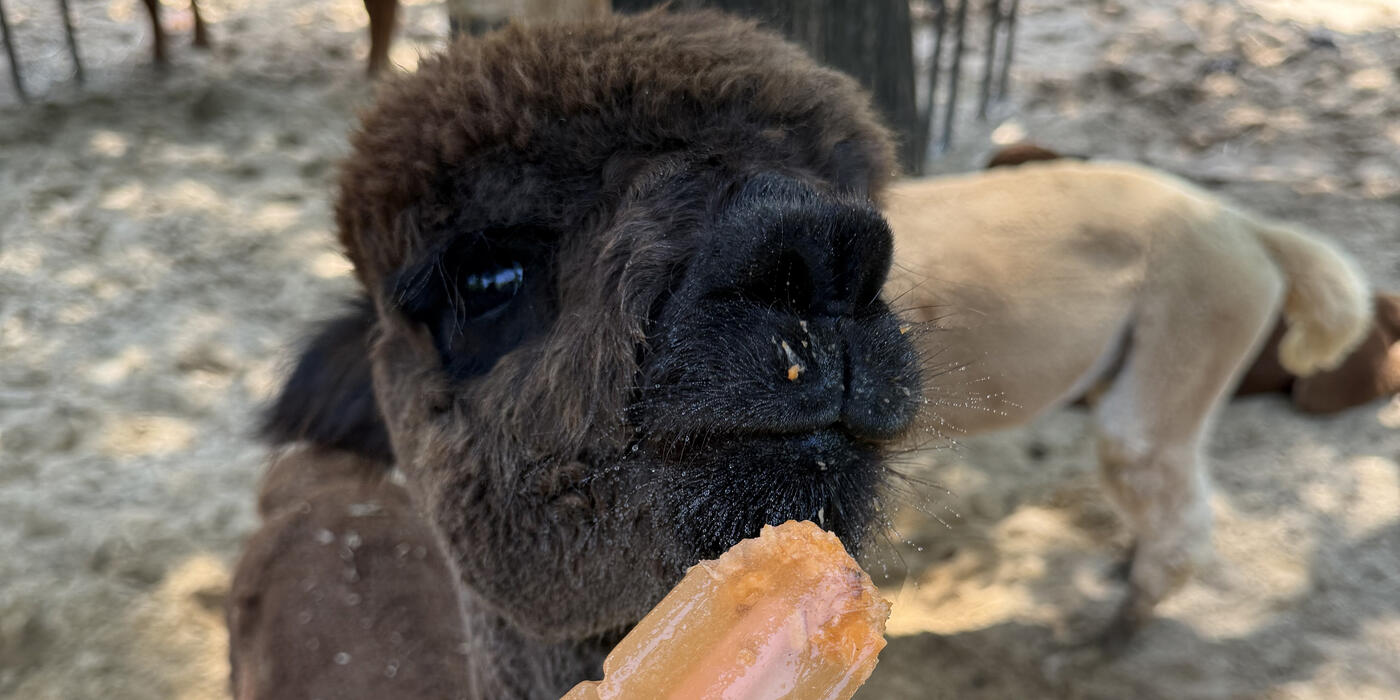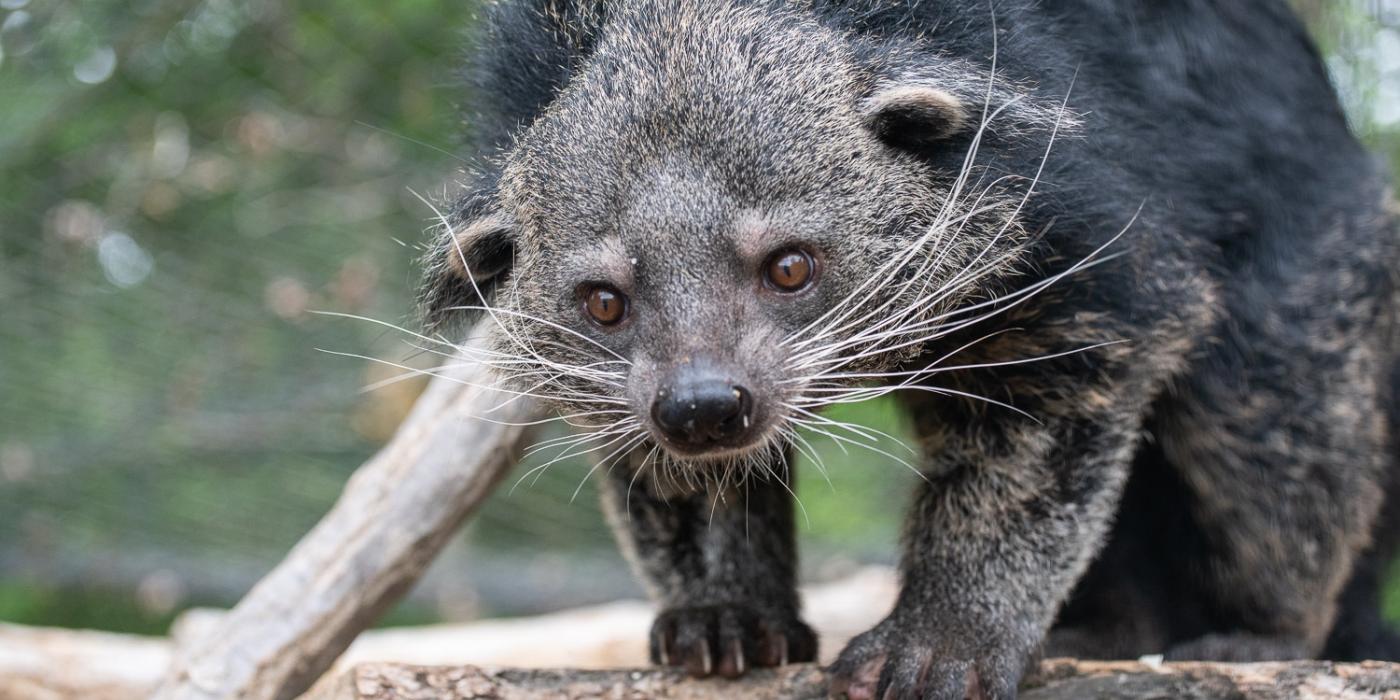How Do You Build a Home for Hermit Crabs?
Part I | Erin Stromberg
When visitors step into Think Tank at Smithsonian’s National Zoo, they might expect to see orangutans participating in a cognition study or Allen’s swamp monkeys using enrichment items to reach treats. What they don’t expect to see—just across the hall from the primates—are land hermit crabs.
What are these crustaceans doing here? To put it simply—Think Tank is the place to think about what animals are thinking! We do this by examining language with orangutans, society with Allen’s swamp monkeys and tool use with—you guessed it—hermit crabs.
To protect their soft back end, hermit crabs need a tool—a shell that has been discarded by another animal. As a crab grows, it must find, examine and test out a new, larger shell. It has to determine if this tool will be a good fit, and fast. A hermit crab cannot survive for long without its shell.
Do hermit crabs ‘think’ when they try a new home on for size? The answer, in most cases, is likely no. While hermit crabs can determine the size of a shell, they usually don’t have the flexibility to follow Plan B or Plan C if a new shell isn’t a good match.
That being said, an interesting behavior has been documented in the wild. When a hermit crab happens upon an empty, discarded shell, it will examine it to see if it is a good fit. If it is not, the hermit crab may wait for others to find the discarded shell. As other crabs approach, they take turns testing the shell, one by one. If the hermit crab waits while others swap shells, it just might get lucky and find a new, larger shell for itself!
As with all the animals at the Smithsonian’s National Zoo, our hermit crabs receive the highest quality of care. When their shells are feeling snug, they have a plethora of new homes to choose from.
A big part of caring for animals is doing research, and that includes reading up on the latest animal care studies, husbandry techniques and exhibit innovations. As part of his summer internship with the primate team, Noah Goldfarb researched hermit crab biology, behavior and husbandry, and he helped inform some exciting new changes made to our hermit crabs’ habitat!
We are all about training the next generation of conservationists, and it was rewarding for our whole team to come together and help advance the care of these charismatic crustaceans.
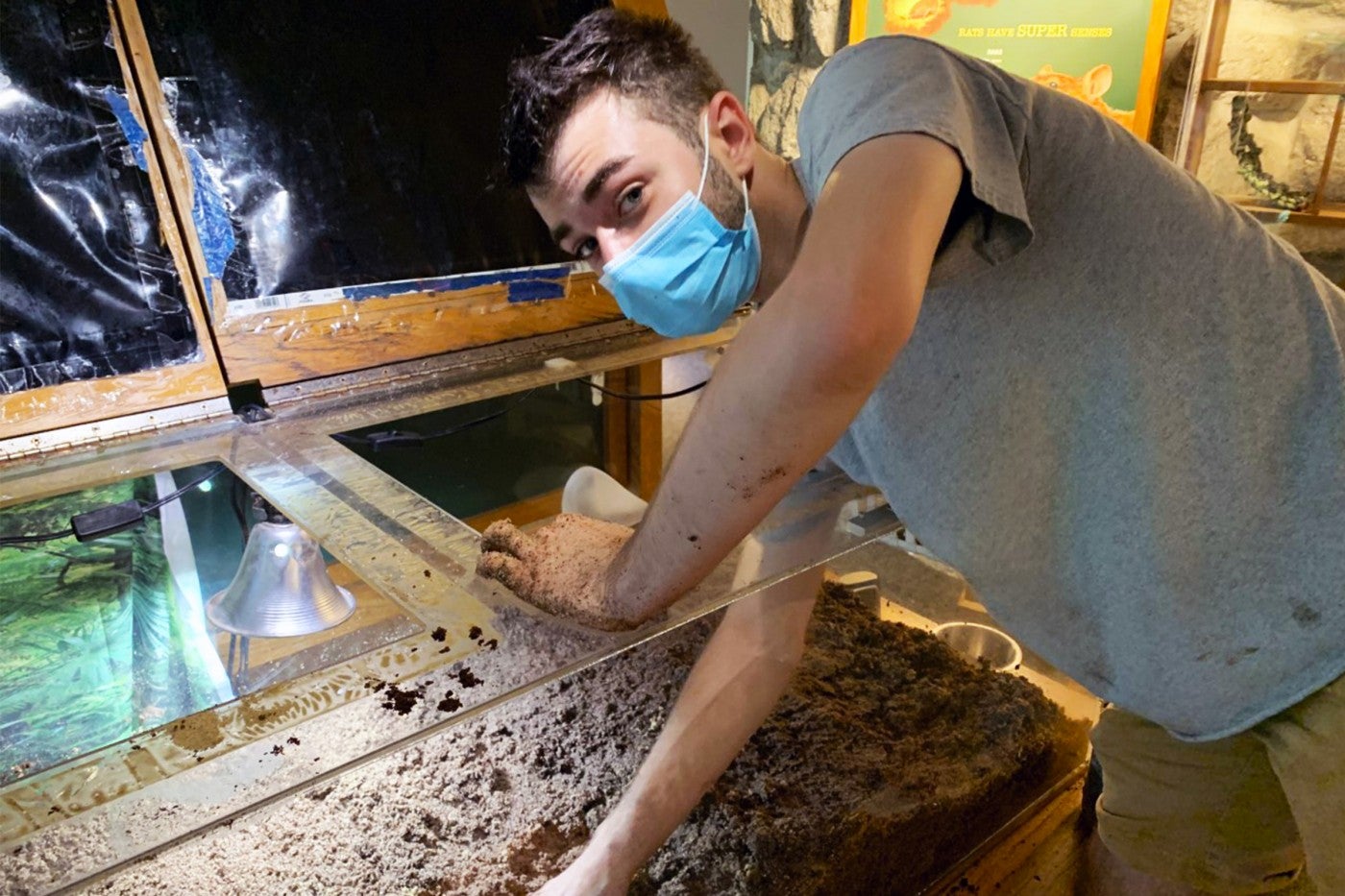
Part II | Noah Goldfarb
When I was 12 years old, I got two pet hermit crabs during a family vacation. I became really interested in their care and biology, so much so that it eventually led me to my current career path: veterinary medicine. When I learned that land hermit crabs would be a part of my internship at the Smithsonian’s National Zoo, I knew I wanted to be involved in their care.
When people acquire a hermit crab from a gift store, kiosk or pet store, they may not realize that these animals can live to be 40 years old and grow to the size of a coconut. Sadly, most pet hermit crabs do not live that long due to improper care and husbandry. With this recent redesign of the Zoo’s hermit crab habitat, I hope visitors gain a better understanding of what these animals need in order to thrive under human care.
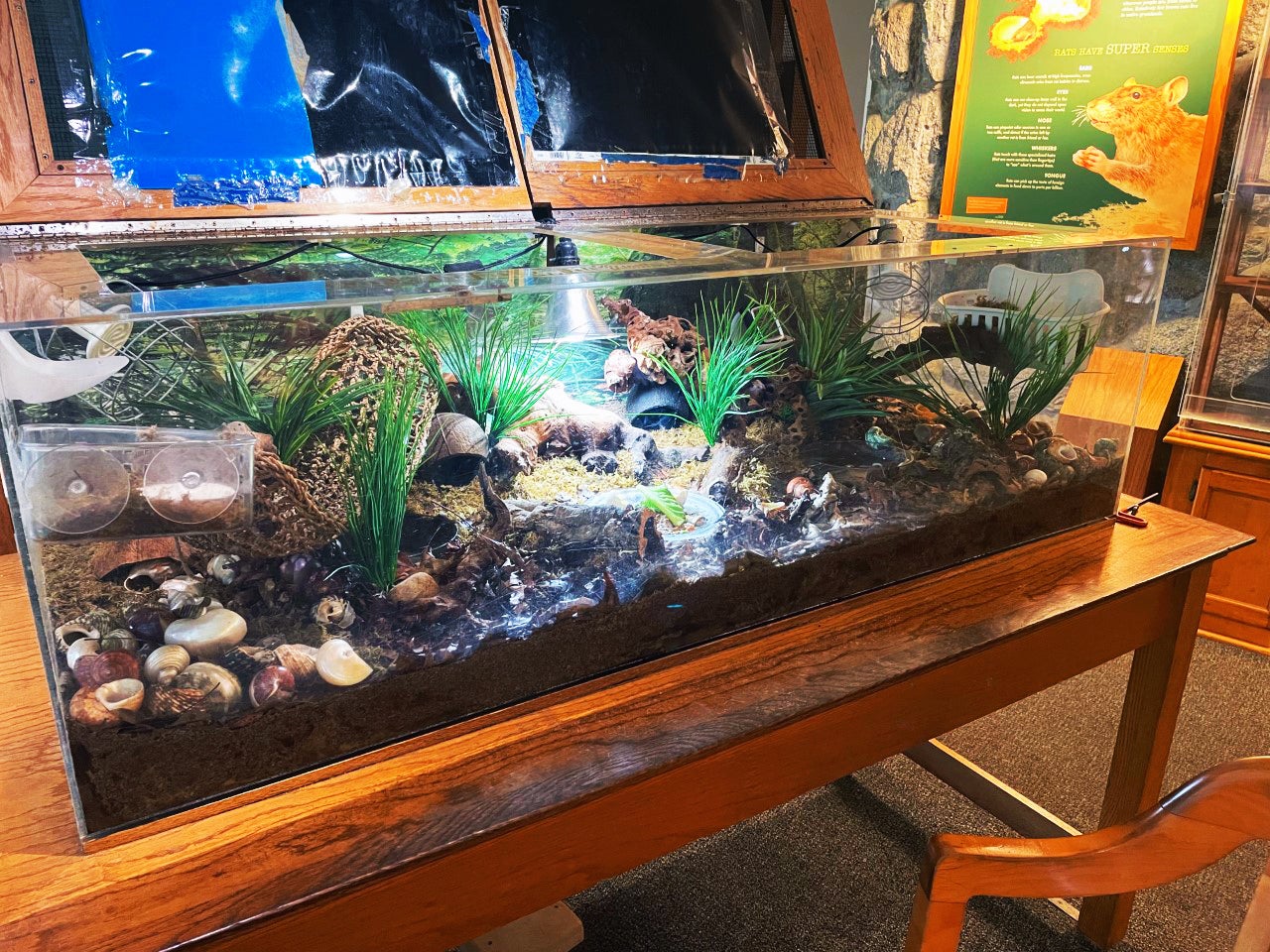
Contrary to popular belief, hermit crabs do not spend all their time on sandy beaches. Rather, they inhabit forests and marshes near the ocean. To mimic this, we provide ours with both freshwater and saltwater pools, so they can choose where to wade. An environment with high humidity is vital for land hermit crabs—which have modified gills—to breathe properly. To better trap in moisture, we re-insulated the top of the tank.
This species spends a good deal of time digging and molting. To give them room to do these natural behaviors, we increased the amount of substrate (ground cover) in the exhibit to six inches deep.
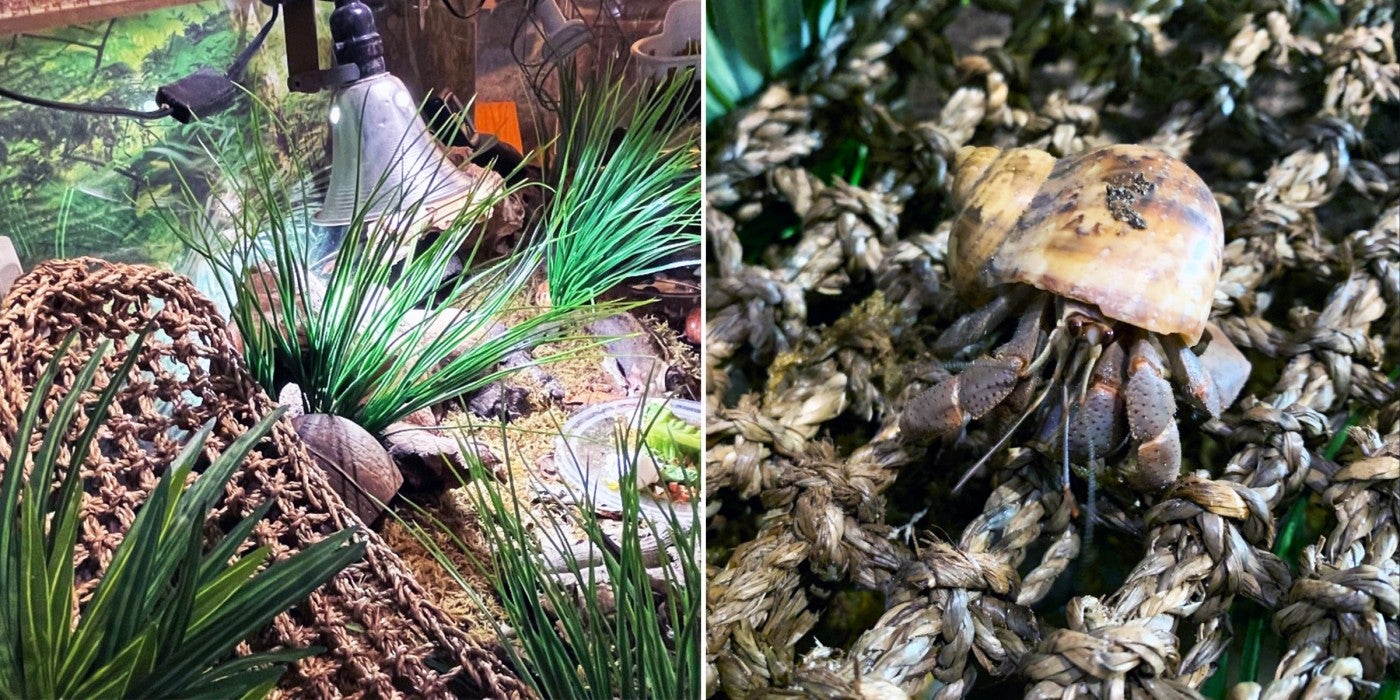
To further replicate their natural environment, we added more plants, moss and leaf litter—which also serves as a snack for the hermit crabs. To top off the habitat renovation, we added a new backdrop to set the scene and help reinforce where they are found in nature.
As you can see, a lot of work goes into providing the proper care for these little animals. All hermit crabs are wild-caught, so purchasing a pet hermit crab actively takes away from the wild populations of this species. Take those factors into account if you are considering keeping a hermit crab as a pet. Remember: caring for any animal takes commitment.
During your next visit to the Zoo, be sure to stop by Think Tank to check out these dynamite decapods! I hope that by seeing their newly revamped habitat, visitors gain an appreciation of hermit crabs’ unique attributes and a better understanding of their natural history.
This story appears in the October 2021 issue of National Zoo News. Want to “shellebrate” these cool crustaceans? Visit hermit crabs at the Smithsonian’s National Zoo’s Think Tank exhibit!
Related Species:

